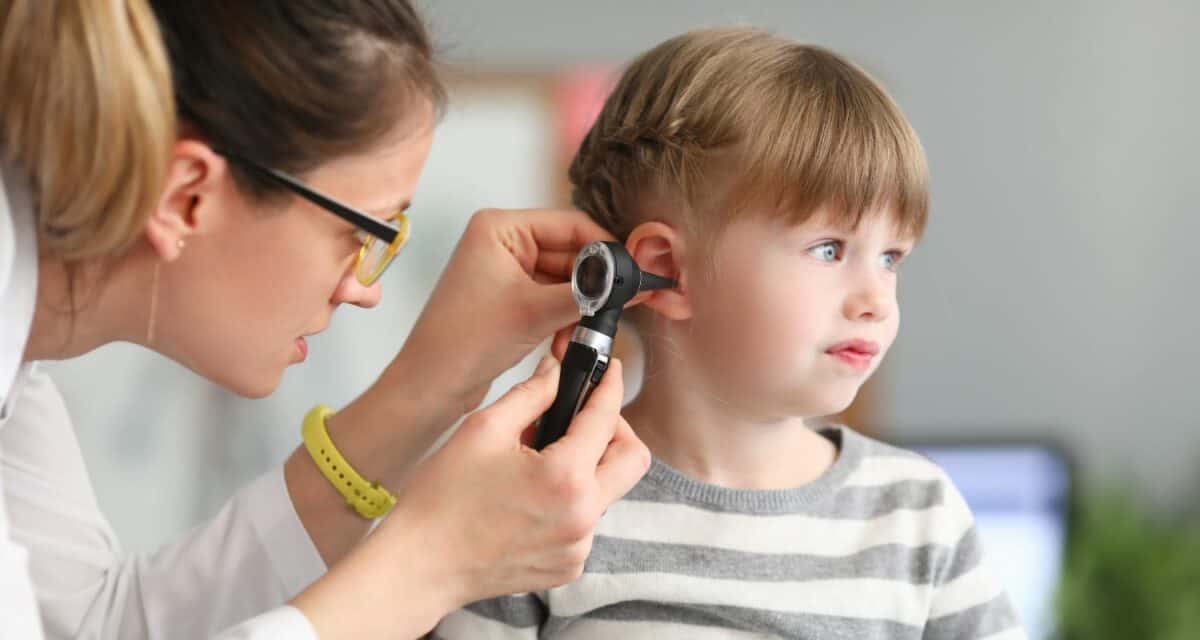Hearing loss impacts people of all ages, including babies and children. Pediatric hearing loss refers to hearing loss that is specifically experienced by children. This hearing loss can be temporary or permanent, depending on the underlying cause of it. Impaired hearing among children may look a little different and is often misrecognized as learning or behavioral issues. The presence of hearing loss at an early age can impact development and contribute to speech delays. This highlights the importance of seeking treatment as early as possible which can change the trajectory for hearing health.
Causes of Pediatric Hearing Loss
There are two main types of hearing loss: sensorineural and conductive which have different underlying causes and approaches to treatment.
- Conductive: this type of hearing loss occurs in the outer or middle ear and is usually temporary. Obstructions prevent soundwaves from either being completely absorbed or traveling through the ear canal to reach the inner ear where they are further processed. A few causes of conductive hearing loss include the following:
-
- Allergies, common cold, ear infections. These factors can cause fluid to build up in the ears.
- An accumulation of earwax, dirt, etc.
- Foreign objects that get lodged and stuck in the ear or cause damage.
- Tumors (noncancerous), bone growths in the middle ear.
- Sensorineural: this type of hearing loss occurs in the inner ear. It results from damage of the sensory cells that are in the cochlea. These hair cells are responsible for converting incoming sound waves into electrical signals which get carried to the brain. Areas of the brain then further process and assign meaning to these signals, allowing us to understand what we hear. Sensorineural hearing loss can be congenital which means it was present at birth (this is not as common) or acquired, meaning it developed after birth. Common causes of sensorineural hearing loss include:
- Congenital: genetics, premature birth, and low birth weight.
-
- Acquired: exposure to loud noise, chronic ear infections, and head injuries.
Unlike congenital hearing loss, sensorineural hearing loss is permanent. When hair cells
in the inner ear are damaged, this damage is irreversible. These sensory cells do not regenerate and there are no medical treatments to repair them. So this hearing loss is chronic and can be effectively managed through treatment options identified by a hearing healthcare specialist.
Signs of Pediatric Hearing Loss
Hearing loss symptoms can look different among children, depending on age and where they are in terms of speech communication. Symptoms include the following:
- For newborns and infants:
-
- Lack of response to your voice or other noises.
- Doesn’t respond when being spoken to.
- Doesn’t really react or get startled by sudden noises.
- There isn’t much of a response to noisy toys.
- Doesn’t readily respond to hearing their name.
- Don’t babble much, try to make noises, or repeat simple sounds.
- Their head doesn’t automatically turn towards sound.
- For toddlers and older children:
-
- Delays with speech and communication.
- Expressing thoughts is challenging.
- Experiences learning issues at school.
- Consistently increasing the volume of the TV or other electronic devices.
- Difficulty hearing, especially in environments with background noise.
- Experiences earaches, ear pain, discomfort.
If you recognize any of these signs, it is important to address it right away by scheduling an appointment for a hearing consultation.
Diagnosing and Treating Pediatric Hearing Loss
There are a few testing options to evaluate pediatric hearing loss which depends on the child’s age. Different types of hearing tests include:
- 6 months: visual reinforcement audiometry (VRA) can be used to assess the hearing capacities of infants as young as 6 months. VRA testing involves playing sounds and evaluating the infant’s ability to turn towards the sound.
- toddlers and preschoolers: play audiometry is a type of test that feels like a game. The child is asked to perform a specific task when they hear a sound (example: raise your hand when you hear the beep).
- older kids: pure tone audiometry testing is also a common test used to assess hearing loss among adults. It involves wearing headphones and indicating when you hear a sound (played at different volumes) by pressing a button or raising your hand.
Treatment for pediatric hearing loss depends on a few factors including the degree of impairment. Treatment options include hearing aids, cochlear implants, speech therapy, and assistive listening devices.

